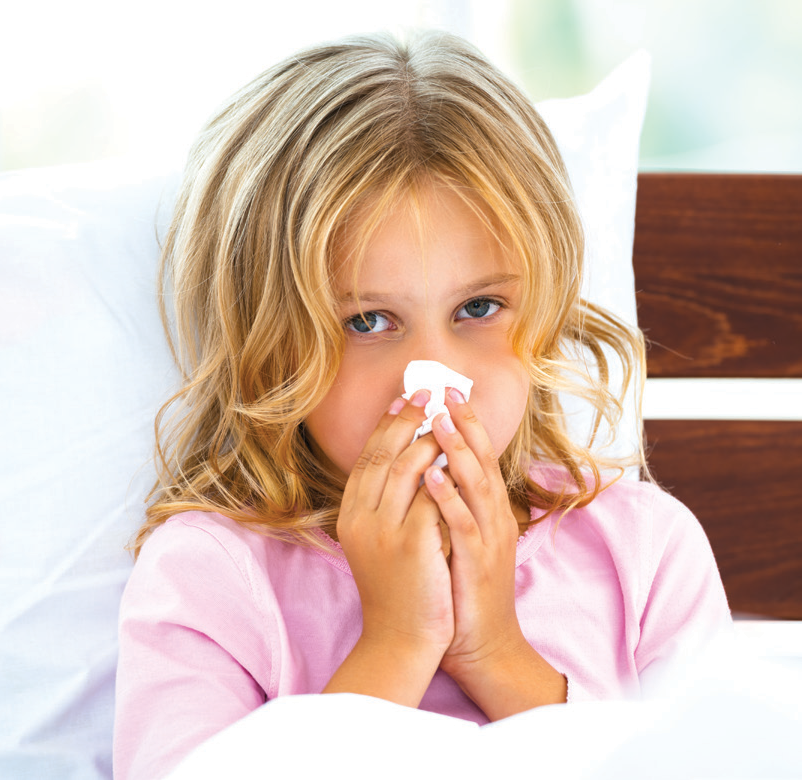It’s that time of year again. We get to play that winter game we all love – “Do I have the flu, or just a cold?”
So How Do You Know?
Believe it or not, it’s actually pretty easy to tell. And, no, the answer doesn’t depend on how hungry you are. “Feed a cold, starve a fever” is just an old wives’ tale. No matter how high your fever, if you’re hungry, and able to keep food down, go for it. The nutrients can only help you get better.
The common cold and the flu are spread the same way. You come into contact with aerosol droplets that were spread by someone with the illness. You can breathe them in, pick them up from a surface they’ve recently touched, then touch your own mouth, nose, or eyes.
So how do you know what you have? You can usually feel a cold coming on. You may have a bit of a sore throat for a day or so, then the runny nose, sneezing, watery eyes, and coughing start. There might be a slight fever, but that’s rare in adults. A common cold doesn’t usually cause fevers higher than 101.
You’ll be contagious for the first few days, so do everyone in your office a favor and stay home. You might think you’re being a trooper and that you don’t really feel that badly, but no one, honestly no one, wants to listen to you sneeze and cough all over the shared office space. After those first few days, even if you’re still coughing and sneezing, you’re generally not contagious. Just wash your hands and use hand sanitizer a lot.
The flu is a whole different ballgame. The flu will come out of nowhere and knock you flat on your butt for weeks. Almost everyone thinks they’ve had the flu until they actually have the flu. Then they realize that what they actually thought of as the flu before was nothing more than a romp through a slightly sniffly meadow. The flu comes out of nowhere and the symptoms invade your entire body. High fever, body aches, muscle aches, headaches, possibly vomiting and diarrhea. Being a trooper and going into the office won’t even be an option.
The flu is also much more dangerous than the average cold. For the very young and the elderly, or the otherwise sick, the flu can quickly turn into pneumonia or bronchitis, which can be deadly. People in these categories need to be very careful when they get sick and always seek out their doctor’s advice.
If you’re still not sure which illness you have, the best way is to take stock of where the symptoms are concentrated and take your temperature. If your temperature is 100 and you can’t stop sneezing, you probably have a cold. If your temperature is 103 and you can’t even stand up from your bed, you have the flu.

Should You See Your Doctor?
For a cold, you’re generally ok to let it run its course. If you’re otherwise healthy, you can do the same for the flu. But if your cough doesn’t go away after about 3 weeks, your fever stays high for more than 3 days, or your sore throat is severe and getting worse, see your doctor. You could have strep throat or a bacterial infection that requires medication.
Can You Prevent Getting Sick?
There’s no 100% certain way to avoid getting sick. The best ways to keep from getting sick is to wash your hands thoroughly and often, and to avoid anyone who is sick. Give that sick co-worker who just HAD to come in today dirty looks until they get the hint and go home. If a family member is sick, make sure someone is wiping down counters and surfaces they touch with a germ-killing cleanser to get rid of as much of the muck as you can. Try to get your kids to follow the same rules, but as kids are well-known walking petri dishes, you probably won’t have much luck with this one. If you’re out somewhere and sneeze or cough, use an alcohol-based hand sanitizer if there’s no sink available. If you’re able to get a flu shot, do so.
For the most part, if you’re an otherwise healthy adult, neither the flu nor the cold will be dangerous. Stay hydrated, listen to your body’s hints, and get as much rest as it tells you it needs.


